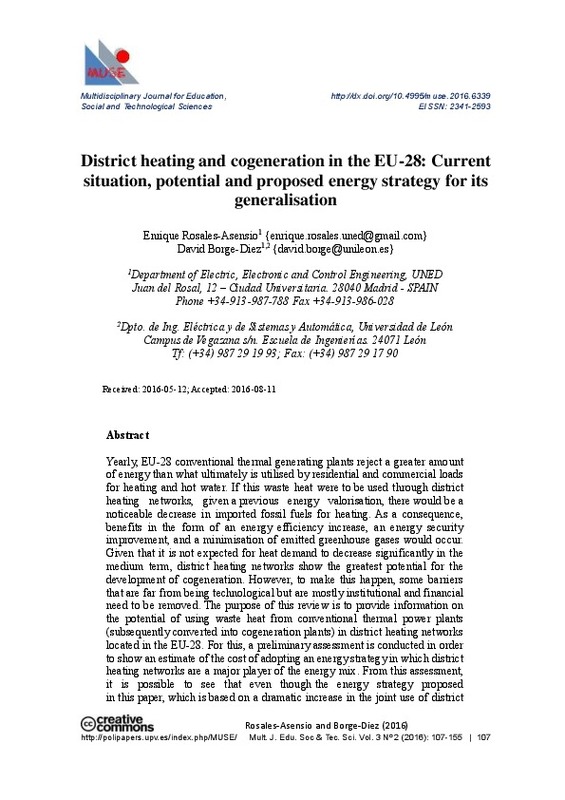JavaScript is disabled for your browser. Some features of this site may not work without it.
Buscar en RiuNet
Listar
Mi cuenta
Estadísticas
Ayuda RiuNet
Admin. UPV
Desde el lunes 3 y hasta el jueves 20 de marzo, RiuNet funcionará en modo de solo lectura a causa de su actualización a una nueva versión.
District heating and cogeneration in the EU-28: Current situation, potential and proposed energy strategy for its generalisation
Mostrar el registro completo del ítem
Rosales-Asensio, E.; Borge-Diez, D. (2016). District heating and cogeneration in the EU-28: Current situation, potential and proposed energy strategy for its generalisation. Multidisciplinary Journal for Education, Social and Technological Sciences. 3(2):107-155. https://doi.org/10.4995/muse.2016.6339
Por favor, use este identificador para citar o enlazar este ítem: http://hdl.handle.net/10251/76937
Ficheros en el ítem
Metadatos del ítem
| Título: | District heating and cogeneration in the EU-28: Current situation, potential and proposed energy strategy for its generalisation | |
| Autor: | Rosales-Asensio, Enrique Borge-Diez, David | |
| Fecha difusión: |
|
|
| Resumen: |
[EN] Yearly, EU-28 conventional thermal generating plants reject a greater amount of energy than what ultimately is utilised by residential and commercial loads for heating and hot water. If this waste heat were to be used ...[+]
|
|
| Palabras clave: |
|
|
| Derechos de uso: | Reconocimiento - No comercial - Sin obra derivada (by-nc-nd) | |
| Fuente: |
|
|
| DOI: |
|
|
| Editorial: |
|
|
| Versión del editor: | https://doi.org/10.4995/muse.2016.6339 | |
| Agradecimientos: |
We are grateful to the experts contacted who gave us their support, in particular and
especially to Poul Alberg Østergaard (Aalborg Universitet), Capezzali Massimiliano (École
Polytechnique Fédérale de Lausanne), Kevin ...[+]
|
|
| Tipo: |
|








